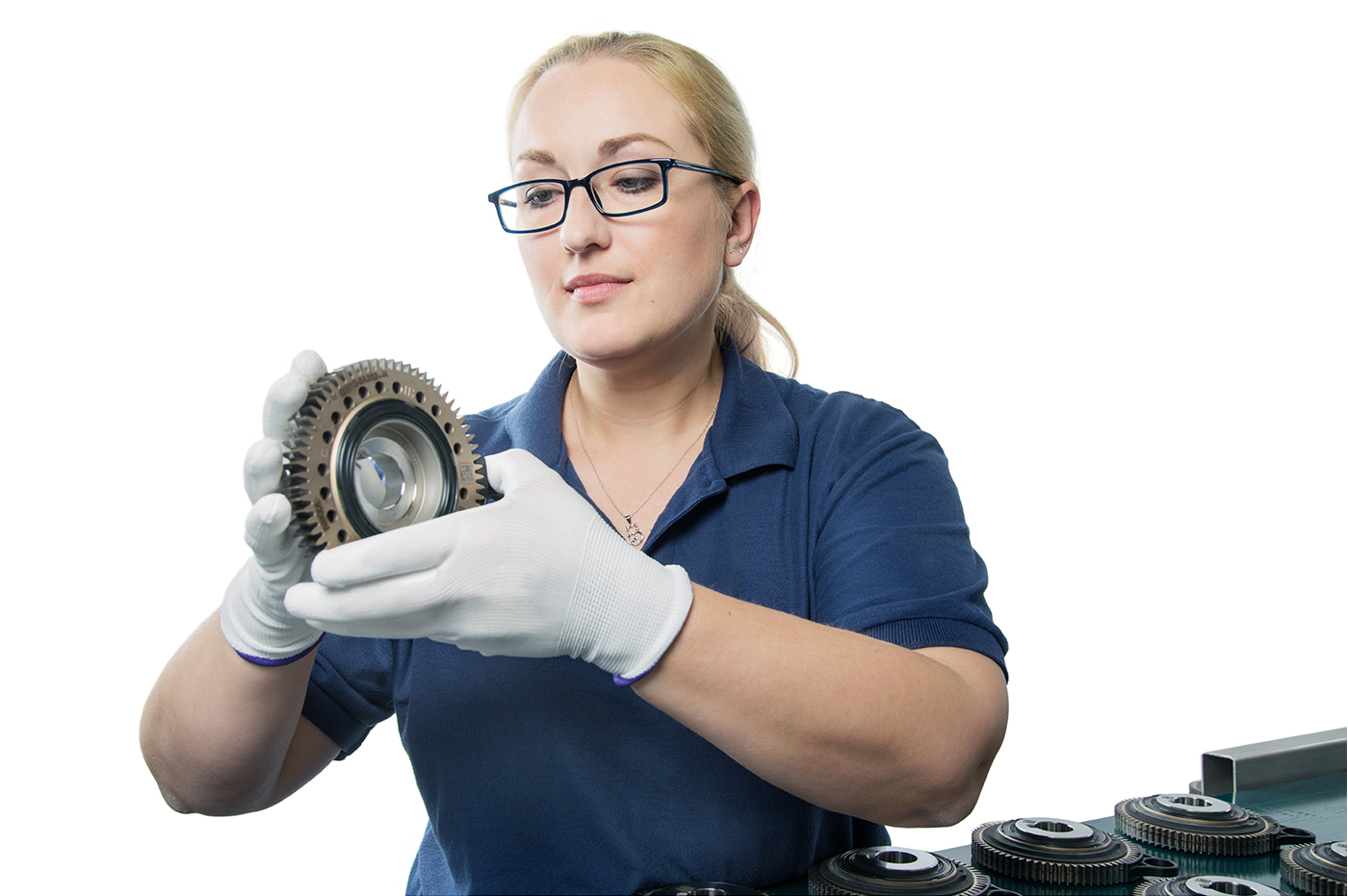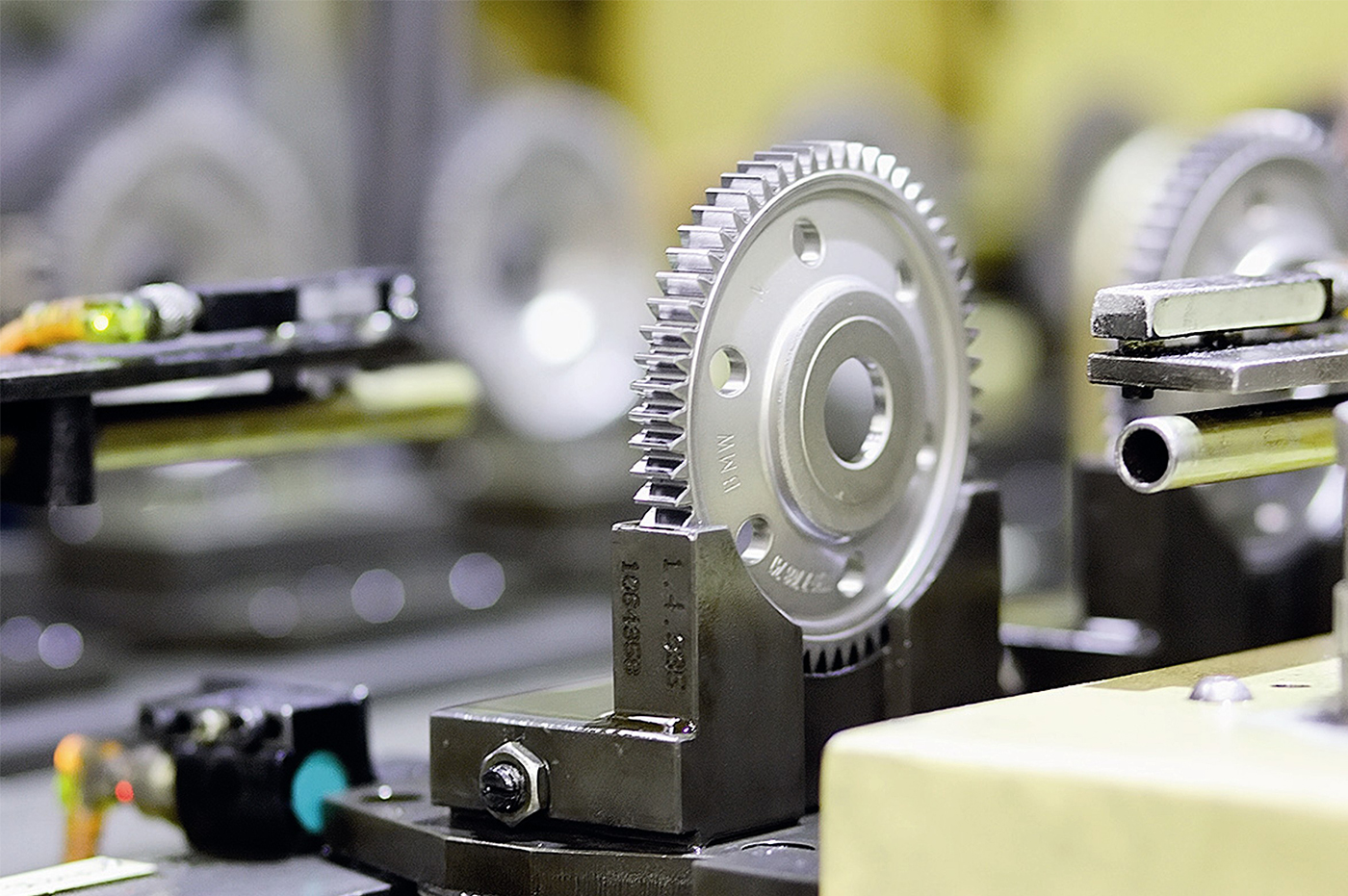Case Study Miba
For Miba, advancing digitalization in the various specialist areas has long been one of the most important and future-oriented development steps. The close integration of the ERP system and MES as well as the creation of real-time transparency in the material flow were key measures for the comprehensive digitization of logistics processes.
Best optimization results thanks to cronetwork
Meaningful real-time
information
Transparency of
production processes
close integration
with SAP®
Improved
data quality
Reduction of
manual effort
Targeted information preparation
Miba AG: High dynamics toward digital production
For many years, Miba AG has been one of the absolute technology leaders with its products for the engine and vehicle industry and for suppliers in power generation and transmission, the oil and gas industry, and plant engineering. For Miba, advancing digitalization in the various specialist areas has long been one of the most important and future-oriented development steps. Over time and with the experience gained, the question arose as to whether Miba wanted to focus on individual measures in the future and whether these would also be geared to the same goal. These questions were the starting signal for the smart factory concept.
With almost 8000 employees in 29 plants around the world, every day Miba produces sintered components, engine and industrial plain bearings, friction linings, power electronics components, coatings, and special machines. “With all the insular measures that we have already taken toward Industry 4.0 (the smart factory) and digitalization, we have come to realize that we need a holistic view of the issues to ensure sustainable success,” says Dietmar Hocheneder, Head of Supply Chain Management at Miba Sinter Austria, describing the situation at that time. “The starting shot was fired with the development of the smart factory concept for the comprehensive digitalization of internal logistics processes.
IT roadmap gives us important insights
A detailed big picture of the production landscape involved visualizing the connection between ERP, MES, machine level and the other affected systems. “This phase of the project provided important insights into what the right systems are for our purposes and how we can most effectively connect and use them in terms of digital manufacturing. For example, we confirmed that we needed individual solutions for the respective application areas, with clear separation between internal (cronetwork MES) and external processes (master data management in SAP). The close connection between the two systems goes without saying,” continues Hocheneder.
In the next step, a sandbox was set up, where the theoretical conceptual approaches were transferred to a digital playground and went into test operation together with SAP, cronetwork MES and the machine level. New ideas and processes could be tested here without taking any risks or disrupting ongoing operations.
The step into real-time operation
“The results that we were able to take with us from this test phase convinced us and we dared to take the step into real operation,” explains Hocheneder. “Before that, however, we were still faced with the challenge of deciding which measures to implement first. So we defined and prioritized work packages and selected a representative unit at our Vorchdorf location; there we could map the packages with a manageable quantity structure.
From the outset, Miba’s managers were aware of one thing in this context: the extensive integration of leading software systems is necessary in order to achieve the digitalization goals. Dietmar Hocheneder: “Production planning and control suitable for Industry 4.0 can work only if the data supplied in the systems is up-to-date and, above all, correct. However, this real-time transparency can be achieved only if all activities that occur in production are communicated to the systems without delay and if the systems process the data directly and purposefully.” Therefore, direct communication between MES and the machine controls was realized in a single work package. Supplemented by organizational measures, many added values could already be derived from this. Today, these range from the automatic creation of transport units to the elimination of manual counting, which was previously a potential source of error.
However, the central task was clear from the start: the close integration of the overarching processes between ERP and MES. For example, in the past, long production processes ensured a high WIP (work in progress) in Miba production, since goods movements and inventories between the many operations were not recorded. Therefore, planners lacked a complete overview of the production process. One measure was to shorten the order structure and add several warehouse stages. Today, all inventories and goods movements are recorded in cronetwork MES with the help of Transport and Forklift Control and forwarded to SAP in real time via a powerful interface. In combination with cronetwork detailed planning system, which has also been introduced, this provides a completely new level of data quality in the planning and execution of production processes.
Milestone data matrix code
A significant challenge on the way to fully transparent production is the complex sintering technology. After the first step, the produced parts consist only of compacted, pressed powder. In order to record each individual sintered part, a solution had to be found to ensure that a Data Matrix Code (DMC) could be applied and read on the green blank (sinter blank) even under the most difficult conditions. Hocheneder: “Once we had created the technical conditions, we sent a number of components into a permanent loop for testing purposes, where the DMCs had to be read under various lighting conditions. Thanks to continuous optimization measures, we have achieved a readability rate of more than 99% to date.” So we know that the technology works. However, a nationwide application is not currently planned, as this is strongly dependent on the expected economic efficiency in the respective areas. Questioning the expected benefits is a generally valid approach for digitalization projects at Miba.
Looking into the crystal ball
For Hocheneder’s Miba crew, a concrete picture of future production is already emerging. “As a logistics specialist, I am sure that cronetwork MES will prepare even more intensive data for production employees on the basis of the collected data. In the future, a system will recognize early on that follow-up materials are needed and automatically initiate the necessary procurement steps. The vision behind this is that as many processes as possible between plants, transport equipment and storage systems will run electronically and that the logistics specialist will mainly be responsible for process monitoring.
Dietmar Hocheneder: “With our system partners, we have created an important foundation in the direction of ERP and MES, and with our measures, whether already implemented, in the planning phase or as a distant vision, we are creating strong dynamics that will gradually point us to the next steps in the future of digital manufacturing.”
Products:
sintered components, engine and industrial bearings, friction materials, power electronics components and coatings
Staff:
approx. 8000
cronetwork modules:
plant data, machine data, time & attendance, work center monitor, PIDO, scheduling board, OPC, transport and forklift management, SAP Connector
“With our system partners, we have created an important foundation in the direction of ERP and MES, and with our measures, whether already implemented, in the planning phase or as a distant vision, we are creating strong dynamics that will gradually point us to the next steps in the future of digital manufacturing.“




